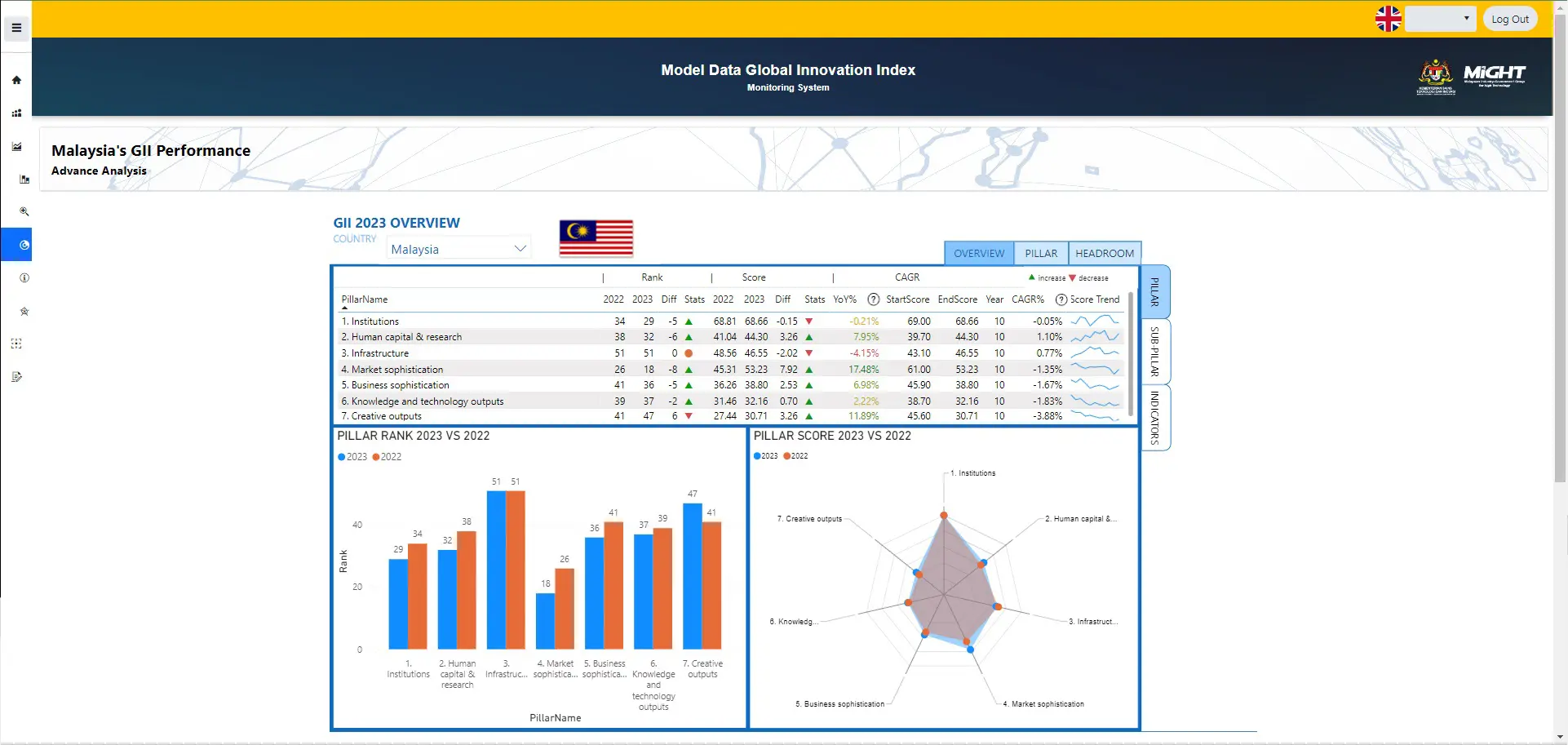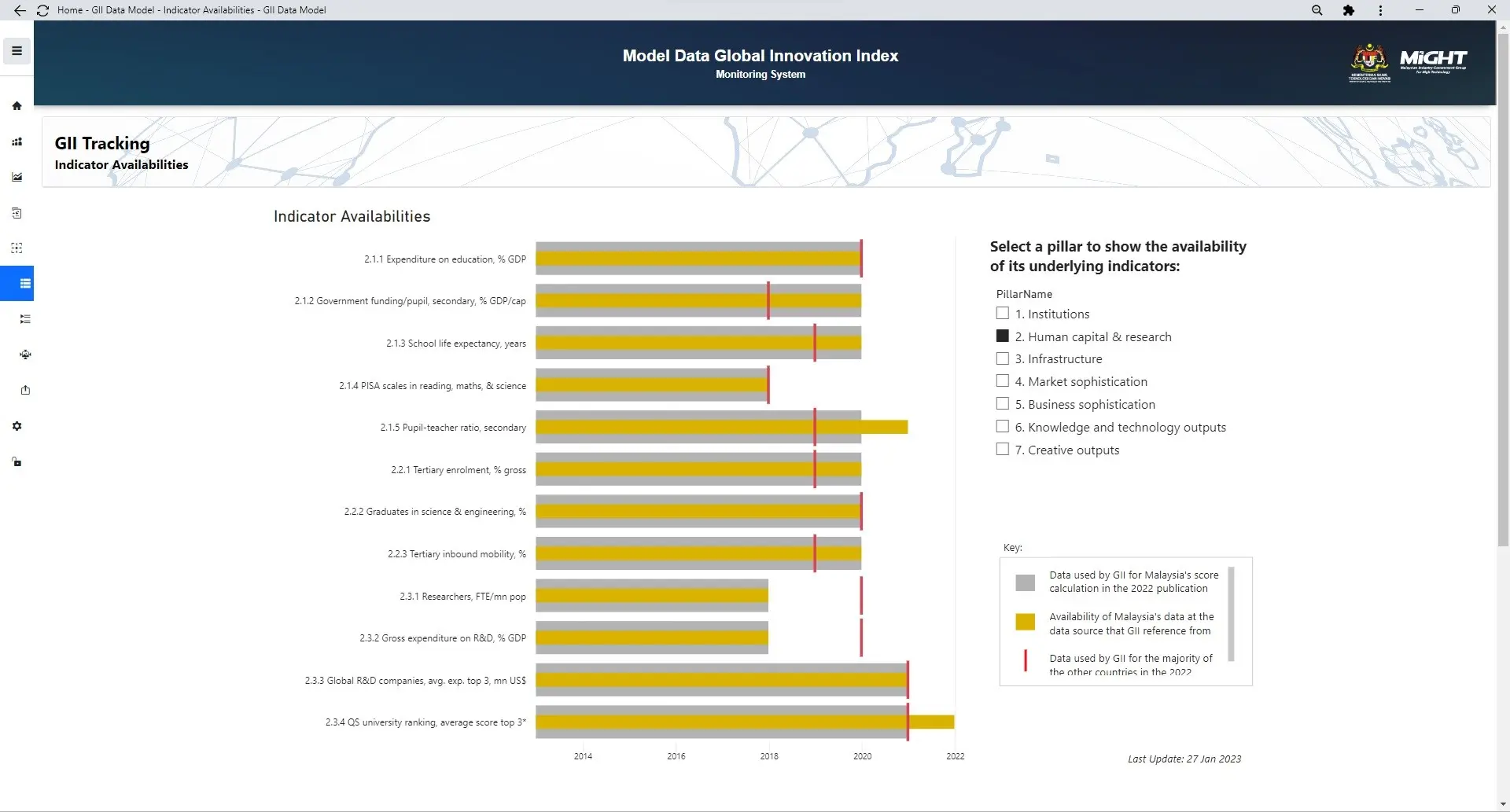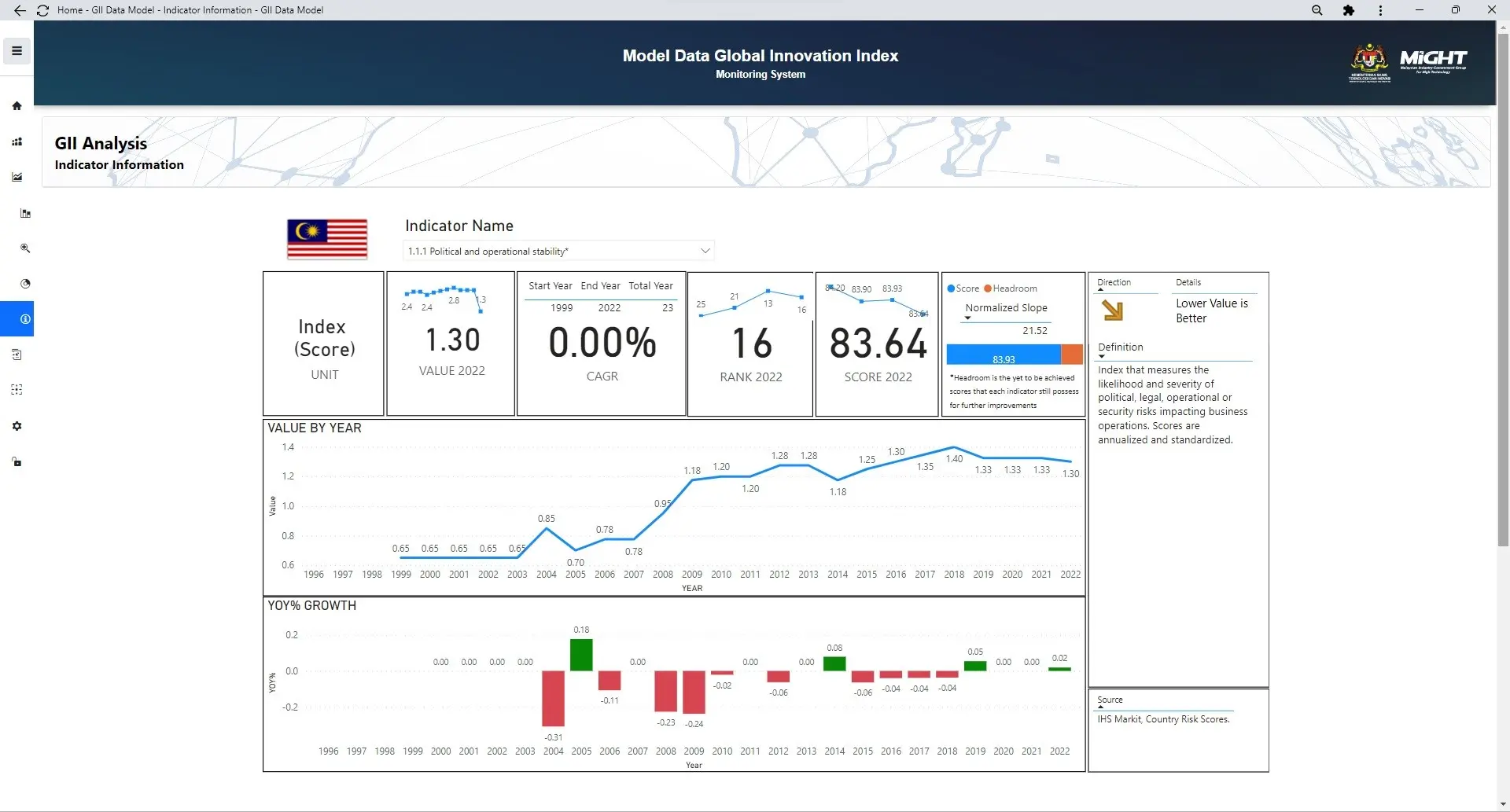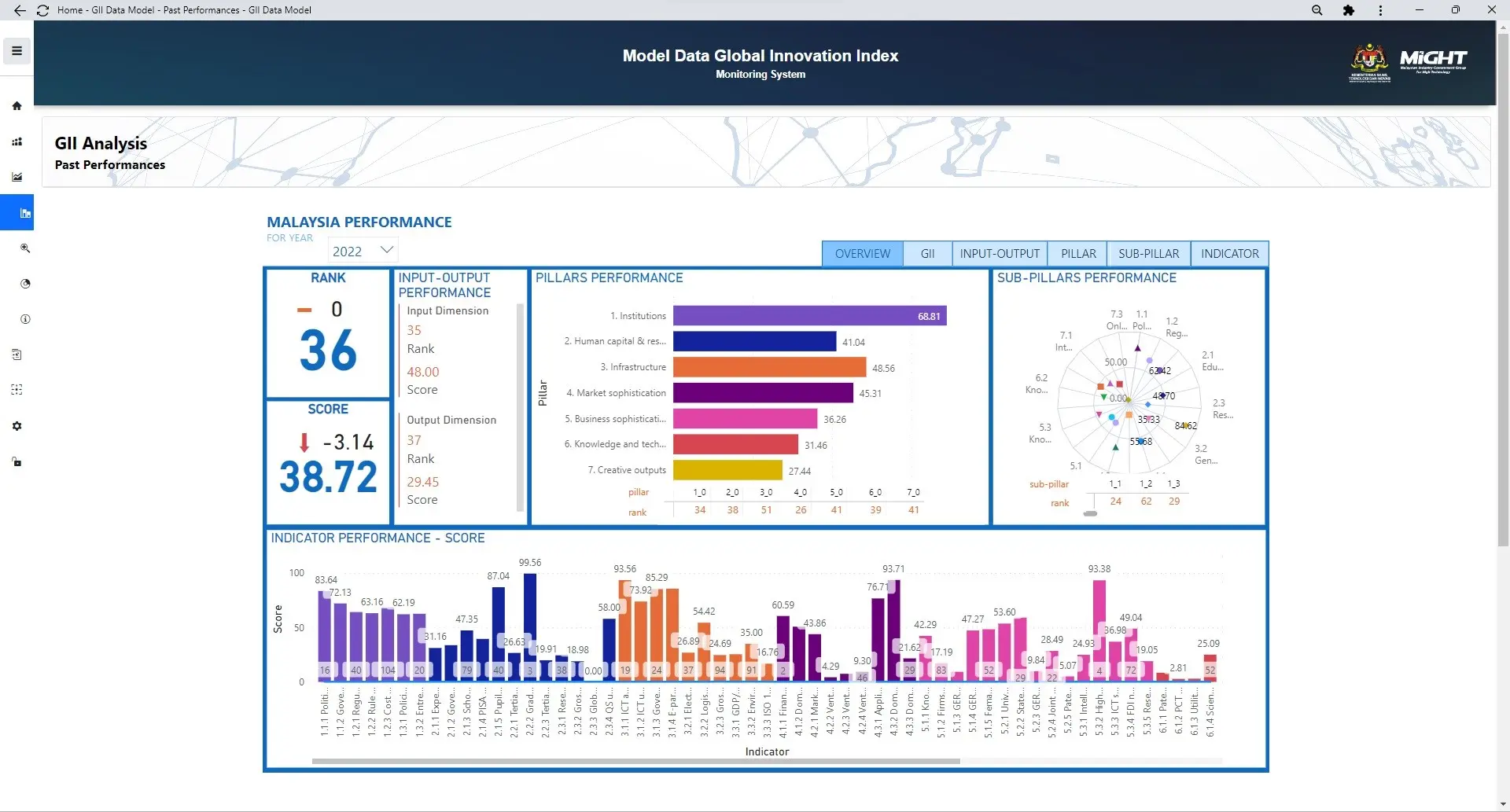Indeks Inovasi Global: Bab Malaysia
Pengumuman!


Save the Date: September 27, 2023 – Release of the Global Innovation Index 2023
The 16th edition of WIPO’s Global Innovation Index (GII) will be released on Wednesday, September 27, 2023 during a hybrid event from 13:30 to 15:30 p.m. CEST (Geneva time) or 19:30 to 21:30 p.m. GMT (Malaysia time) featuring ministers, business leaders, and innovation experts. Key findings of the GII 2023 will be presented, followed by a panel discussion on “Innovation in the face of uncertainty”.
- 0Days
- 0Hours
- 0Minutes
- 0Second
" The Twelfth Malaysia Plan (RMK-12) has set the target for Malaysia to rank 20th in the Global Innovation Index by 2025 "
Intro to Webpage GII
Webpage Global Innovation Index (GII): The Malaysia Chapter is now live!
Hello! GII's.
Welcome to the Webpage Global Innovation Index : The Malaysia Chapter , your one-stop destination for insights into the world of innovation! We are excited to present a comprehensive platform that sheds light on the transformative power of innovation across the globe.
The Global Innovation Index, or GII is a pioneering initiative brought to you by a collaborative effort between the World Intellectual Property Organization (WIPO), Cornell University, and INSEAD. This index serves as a crucial benchmark, evaluating and ranking the innovative capabilities of nations worldwide, especially Malaysia.
At our Webpage, we have assembled a wealth of information, data, and analyses about Malaysia's and the world's current status to help you understand the multifaceted dimensions of innovation. Explore the latest rankings of countries, delve into annual reports, and gain valuable insights into global innovation trends and best practices.
Our Webpage delves into a multitude of factors that contribute to innovation, ranging from research and development to investments in education, infrastructure, and technology. We also assess entrepreneurial activities and the protection of intellectual property, among many other essential aspects.
By providing this comprehensive overview, we aim to offer a clear perspective on how innovation can drive our nation (Malaysia) to positive change in various economic and social sectors. Nations that excel in the GII rankings are known for fostering innovation-friendly environments, leading to the development of cutting-edge technologies and solutions that impact society and economies in profound ways.
Policymakers, business leaders, researchers, and curious minds can all benefit from our Webpage's extensive data. Through GII, we hope Malaysians to foster a better understanding of the pivotal role innovation plays in shaping the trajectory of countries and offer valuable insights to enhance the quality of life and global competitiveness.
News & Events Calendar
KEEP UPDATE ON GII MALAYSIA
UPCOMING NEWS & EVENTS
Source:
https://mastic.mosti.gov.my
Source : www.wipo.int
Source : https://mastic.mosti.gov.my
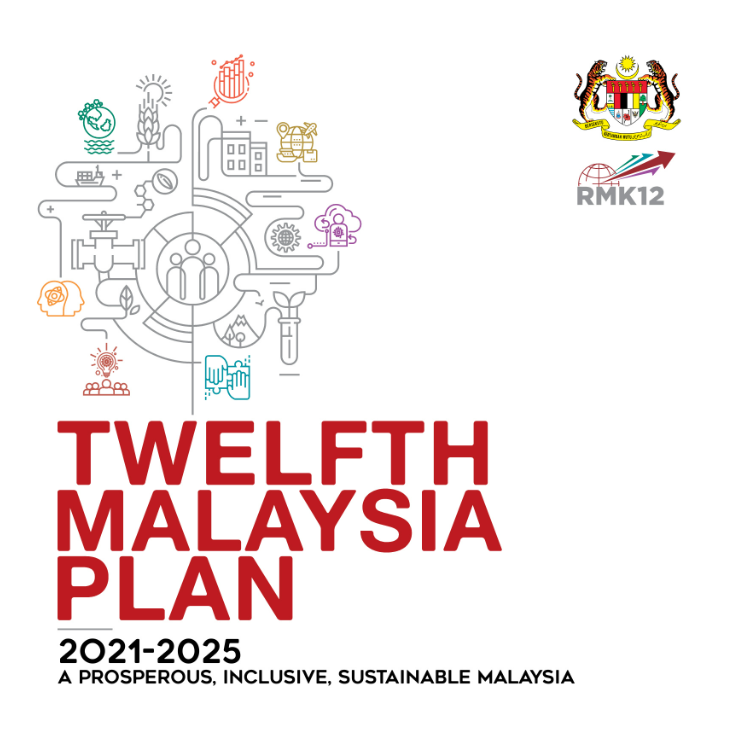
The 12MP or RMKe-12
The 12MP or RMKe-12
The Twelfth Malaysia Plan otherwise known as the 12th Malaysia Plan and abbreviated as "12MP" or (Malay: Rancangan Malaysia Kedua Belas - RMke-12), is a comprehensive blueprint prepared by the Economic Planning Unit (EPU) of the Prime Minister's Department (PMO) and the Ministry of Finance. You can find more information about the GII in 12MP here specifically in [p.342, p.348, p.387, p.388 & p.391].
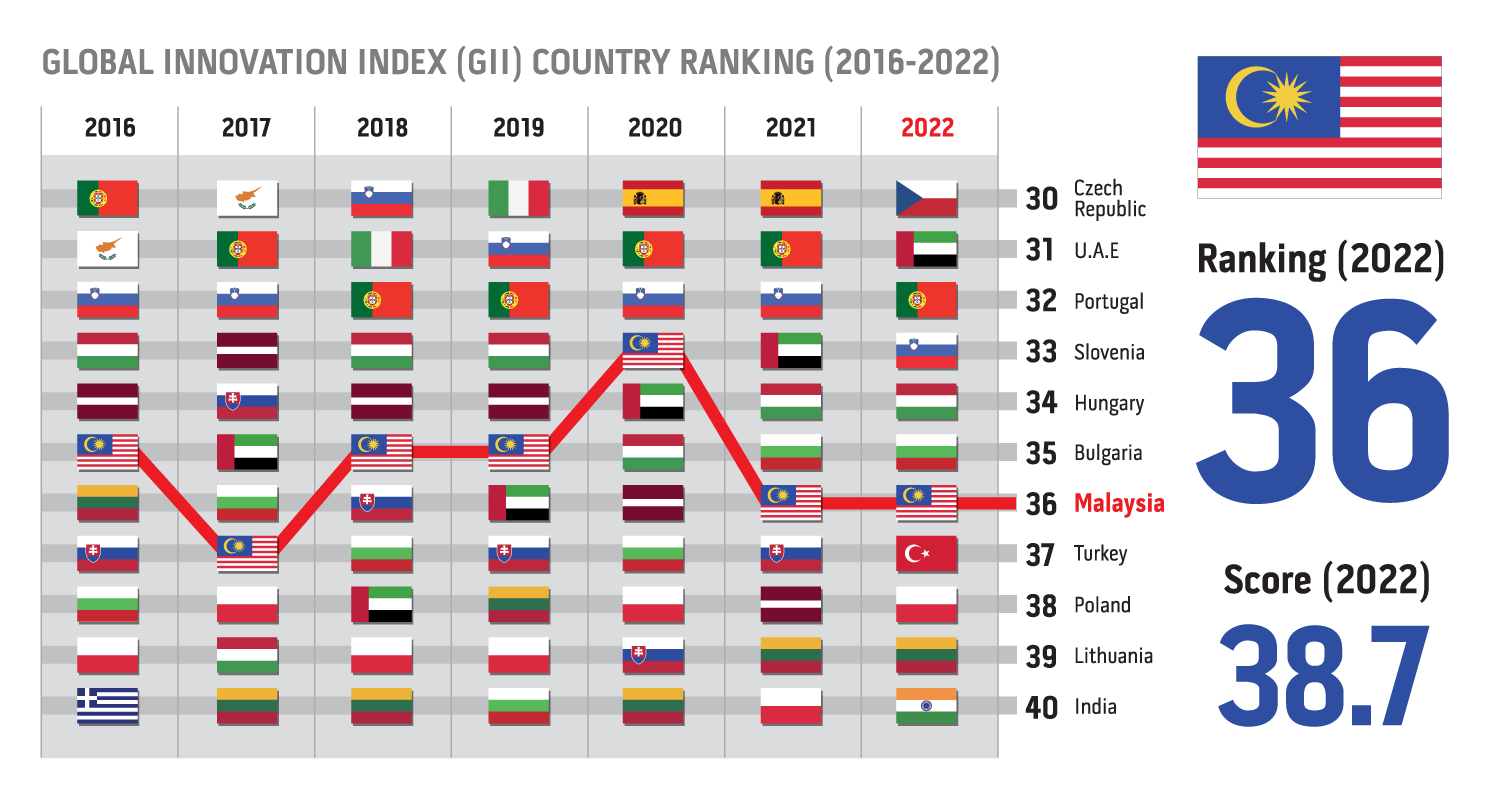
GII Monitoring System also known as "Model Data Global Innovation Index"
GII Monitoring System also known as "Model Data Global Innovation Index"
The Global Innovation Index (GII) monitoring system called as "Model Data Global Innovation Index" is a tool that was specifically developed to track Malaysia’s GII scores & ranking from the past year since 1996 to the next foresight year ahead. The system is managed by MASTIC-MOSTI and MIGHT (Strategic Partner) in the Jawatankuasa Inter-Agensi Pemantauan Daya Saing GII (JIPGII), which is a committee established by the Ministry of Science, Technology and Innovation (MOSTI). The purpose of the system is to monitor Malaysia’s past performance, country benchmarking, details of indicator information, simulation of data/scenarios that have the potential to predict and subsequently improve the country’s position, and tracking to track the year used for each indicator for Malaysia and to compare/monitor targets and actual data from time to time. You can find more information about the Portal called System Model Data GII HERE.
We invite you to embark on an exciting journey of discovery with the Webpage Global Innovation Index: Malaysia Chapter. Whether you're seeking to learn, analyze, or collaborate, we are here to empower your understanding of the world of innovation.
Top 10: The World’s Most Innovative Countries – Global Innovation Index 2022.
Switzerland, the U.S., Sweden, the United Kingdom and the Netherlands are the world’s most-innovative economies according to WIPO's Global Innovation Index 2022.
Source : www.wipo.int
Current Year GII Report
The 2022 Global Innovation Index
The main objective of the Global Innovation Index (GII) reports 2022 is to track the most recent global innovation trends against the background of an ongoing COVID-19 pandemic, slowing productivity growth and other evolving challenges. The GII reports 2022 aim to provide a comprehensive and multidimensional measure of innovation performance for 132 economies, highlighting their innovation strengths and weaknesses. The GII reports 2022 also focus on the future of innovation-driven growth, exploring whether stagnation and low productivity growth are here to stay, or whether we are about to enter a new era,
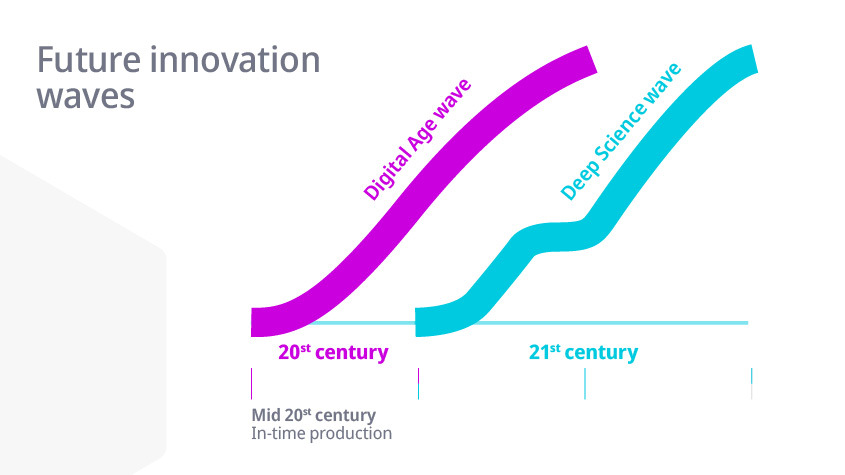 Source : www.wipo.int
Source : www.wipo.int
where new innovation spurts - the Digital Age and the Deep Science Innovation waves - bring about an economic uplift. The GII reports 2022 offer insights and recommendations for policymakers, business leaders, innovators and researchers on how to foster innovation and leverage its potential for sustainable and inclusive development.
Global Innovation Index 2022: What You Need to Know by WIPO
Source : www.wipo.int
An overview of the key findings of the Global Innovation Index (GII) 2022
Switzerland, the United States, Sweden, the United Kingdom and the Netherlands are the world’s most-innovative economies, the GII finds, with China on the threshold of the top 10. Other emerging economies are also showing consistently strong performance, including India and Türkiye, both of which enter the top 40 for the first time. Published on 29 September 2022, the GII 2022 ranks the innovation performance of 132 countries and economies around the world. Themed "What is the future of innovation-driven growth?", this year’s edition focuses on the effect of innovation on productivity and wellbeing of society over the coming decades.
#WIPO #GlobalInnovationIndex #GII2022 #Innovation

GII Conceptual Framework
Conceptual Framework for the Global Innovation Index 2022
The overall GII ranking is based on two sub-indices that are both equally important in presenting a complete picture of innovation; the Innovation Input Sub-Index and the Innovation Output Sub-Index.
Each of the five (5) input and two (2) output pillars is divided into three sub-pillars, each of which is composed of individual indicators – a total of 81 this year (see the Economy profiles section for the Framework of the Global Innovation Index 2022).
A detailed elaboration of the conceptual framework and pillars can be found in the 2020 edition of the GII. Each sub-pillar is calculated by taking the weighted average of its individual indicators’ scores, which are normalized to again produce scores between 0 and 100.
Pillar scores are calculated using the weighted average of each pillar’s sub-pillar scores.
Hence, three indices are calculated:
01
Innovation Input
Sub-Index
Five input pillars capture elements of the economy that enable and facilitate innovative activities.
02
Innovation Output
Sub-Index
Two Innovation outputs pillars are the result of innovative activities within the economy.
03
The overall
GII score
Is the average of the Input and Output Sub-Indices, on which the GII economy rankings are produced.
Definitions of the pillars and what they evaluate:
5
Input Pillar
Innovation Input
Sub-Index
The first sub-index of the GII, the Innovation Input Sub-Index, has five enabler pillars: Institutions, Human capital and research, Infrastructure, Market sophistication, and Business sophistication. Enabler pillars define aspects of the environment conducive to innovation within an economy.
- Pillar 1:Institutions
- Pillar 2:Human capital and research
- Pillar 3:Infrastructure
- Pillar 4:Market sophistication
- Pillar 5:Business sophistication
Institutions
It evaluates the quality and effectiveness of various institutions within a country's innovation ecosystem that play a crucial role in fostering and supporting innovation. It is designed to measure the enabling environment for innovation within a nation. Assessing the state of institutions within a country allows the GII to gauge the overall environment for innovation and identify areas where improvements or policy changes can enhance the innovation ecosystem and promote economic growth and development.
Sub-Pillars:
- Political environment
- Regulatory environment
- Business environment
Human capital and research
This pillar evaluates the availability and quality of human capital, as well as the research and development (R&D) activities within a nation. By evaluating the state of human capital and research within a country, the GII can provide insights into the country's capacity to innovate, the effectiveness of its educational systems, and the extent of its research and development activities. This information is essential for policymakers, businesses, and institutions in identifying strengths and weaknesses in the innovation ecosystem and formulating strategies to foster innovation and drive economic growth and competitiveness
Sub-Pillars:
- Education
- Tertiary education
- Research and development (R&D)
Infrastructure
This pillar evaluates the quality and effectiveness of infrastructure, both physical and digital, within a nation, as these factors play a critical role in supporting innovation and economic development. By assessing the state of infrastructure within a country, the GII provides valuable insights into its capacity to support innovation and create an enabling environment for businesses, entrepreneurs, and researchers to thrive. Strong and reliable infrastructure can enhance connectivity, facilitate knowledge sharing, attract investments, and ultimately contribute to a more innovative and competitive economy.
Sub-Pillars:
- Information and communication technologies (ICTs)
- General infrastructure
- Ecological sustainability
Market sophistication
This pillar evaluates the level of market sophistication and the effectiveness of market mechanisms in supporting innovation-driven activities and economic growth. By evaluating the level of market sophistication within a country, the GII provides insights into the country's readiness to adopt and absorb innovative technologies and solutions. A sophisticated market environment with skilled workers, supportive business conditions, and ample funding opportunities can stimulate innovation, attract investments, and foster a thriving ecosystem of innovation-driven enterprises.
Sub-Pillars:
- Credit
- Investment
- Trade, diversification, and market scale
Business sophistication
This pillar evaluates the sophistication of business activities and practices within a nation, with a focus on aspects that support innovation and entrepreneurship. By assessing the level of business sophistication within a country, the GII provides insights into the innovation readiness and capabilities of businesses. A sophisticated business environment that encourages R&D investments, fosters creativity, and supports entrepreneurship can stimulate innovation-driven growth, foster competitiveness, and contribute to the overall development of a knowledge-based economy.
Sub-Pillars:
- Knowledge workers
- Innovation linkages
- Knowledge absorption
2
Output Pillar
Innovation Output
Sub-Index
Innovation outputs are the results of innovative activities within the economy. Although the Output Sub-Index includes only two pillars, it has the same weight in calculating the overall GII scores as the Input Sub-Index. There are two output pillars: Knowledge and technology outputs and Creative outputs. Although the Output Sub-Index includes only two pillars, it has the same weight in calculating the overall GII scores as the Input Sub-Index.
Knowledge and technology outputs
This pillar evaluates the tangible outcomes of a country's innovation efforts and the knowledge-intensive activities that contribute to technological advancement and economic growth. By assessing the knowledge and technology outputs of a country, the GII provides insights into the impact and effectiveness of its innovation ecosystem. A strong performance in this pillar demonstrates a country's ability to generate new knowledge, technological solutions, and intellectual property, which are essential drivers of economic competitiveness and sustainable growth. Additionally, a country's capacity to contribute to the global knowledge pool and attract international recognition further enhances its status as an innovative and dynamic player in the global economy.
Sub-Pillars:
- Knowledge creation
- Knowledge impact
- Knowledge diffusion
Creative outputs
This pillar evaluates the creative aspects of a country's innovation ecosystem, focusing on the generation and utilization of creative products and outputs. By assessing the creative outputs of a country, the GII provides insights into its ability to foster and capitalize on creativity as a driver of innovation and economic development. A strong performance in this pillar indicates a vibrant creative sector, the capacity to produce and market cultural and creative products, and the potential to leverage creative assets for economic growth and cultural enrichment. Emphasizing creative outputs can contribute to the overall innovation ecosystem and enhance a country's competitiveness in the global creative economy.
Sub-Pillars:
- Intangible assets
- Creative goods and services
- Online creativity
Malaysian GII Overview
An Overview of the Global Innovation Index for Malaysia(2013-2022)
Here is a simplified an interactive GUI dashboard that shows an overview about Malaysia Global Innovation Index measured and ranked in 10 years based on GII reports between year 2013-2022. It typically covers various aspects related to innovation performance, including institutions, human capital and research, infrastructure, market sophistication, business sophistication, knowledge and technology outputs, and creative outputs published by the World Intellectual Property Organization (WIPO) and its partners, which is typically released in September each year. This report provides a detailed analysis of Malaysia's innovation performance, its strengths and weaknesses, and its ranking. It also highlights specific indicators and factors contributing to Malaysia's innovation ecosystem. To get the most accurate and up-to-date information, we recommend checking the official WIPO website for the Global Innovation Index report here.
Source : MIGHT Malaysia
Source : MASTIC Portal
Malaysian GII Analysis
GII Data Analysis
Advance Analysis is used to access detailed reports on the analysis of pillars, sub-pillars, and indicators, performance of indicators compared to the previous year, and headroom availability for… Read More
GII Indicator Data Availabilities
Module Tracking is a module for storing information regarding the availability years for each GII indicator of Malaysia and the years utilized by other countries. This module is intended to track… Read More
GII Indicator information
This module enables registered users to access detailed reports for each indicator, such as data trends, rankings, and scores for the latest year, normalized slope, available headroom, and also… Read More
GII Country Benchmark
This module is intended to display data through visualization, making it easier for users to understand the presented statistics/information. This model allows users to access reports on Malaysia'… Read More
GII Past Performances
Module Tracking is a module for storing information regarding the availability years for each GII indicator of Malaysia and the years utilized by other countries. This module is intended to track… Read More
For more info: Portal System Model Data GII
Infographic Malaysia Innovation Information




About JIPGII
The Inter-Agency GII Competitiveness Monitoring Committee (JIPGII)
Established in January 2021, the formation of this Committee is an initiative by the Ministry of Science, Technology, and Innovation (MOSTI), aligned with the Government's aspiration in the Twelfth Malaysia Plan (12MP) to position Malaysia among the top 20 countries in the Global Innovation Index (GII) by the year 2025. The establishment of this committee is also seen as capable of providing impact and added value to the nation's innovation ecosystem, further enhancing the country's innovation performance effectively and efficiently through integrated inter-agency cooperation involving various ministries, departments, agencies, and private entities.
Through this committee, collaborative ties with the GII report publisher, particularly WIPO, can be established through strategic cooperation with the Intellectual Property Corporation of Malaysia (MyIPO), which is a WIPO member state.
The objective of establishing JIPGII:
- To implement and enhance the monitoring of competitiveness indices in a more systematic and effective manner to improve the country's performance in the Global Innovation Index (GII) report;
- To ensure the accuracy and timely collection, storage, and updating of indicators by data custodians in the international database, thereby showcasing the actual achievements of the country; and
- To identify short-term, mid-term, and long-term targets to improve scores and elevate Malaysia's position in the GII report.
3 PHASE: REALISING MALAYSIA’S ASPIRATION IN GII
Implementation phase and current status
PHASE 1a: MAPPING MALAYSIA'S STATE OF INNOVATION (√ DONE)
Objective: Establishing Malaysia's innovation ecosystem with its source and contribution of data to ensure comprehensiveness, accuracy and timeliness.
 PHASE 1b: COMMUNICATION MALAYSIA'S STATE OF INNOVATION (√ DONE)
PHASE 1b: COMMUNICATION MALAYSIA'S STATE OF INNOVATION (√ DONE)
Objective:
- Coordinating the relay of data information required for GII indicators in a timely manner by National data custodians to the respective international databases and
- Informing National Stakeholders on Malaysia's innovation strategies, initiatives and performance.
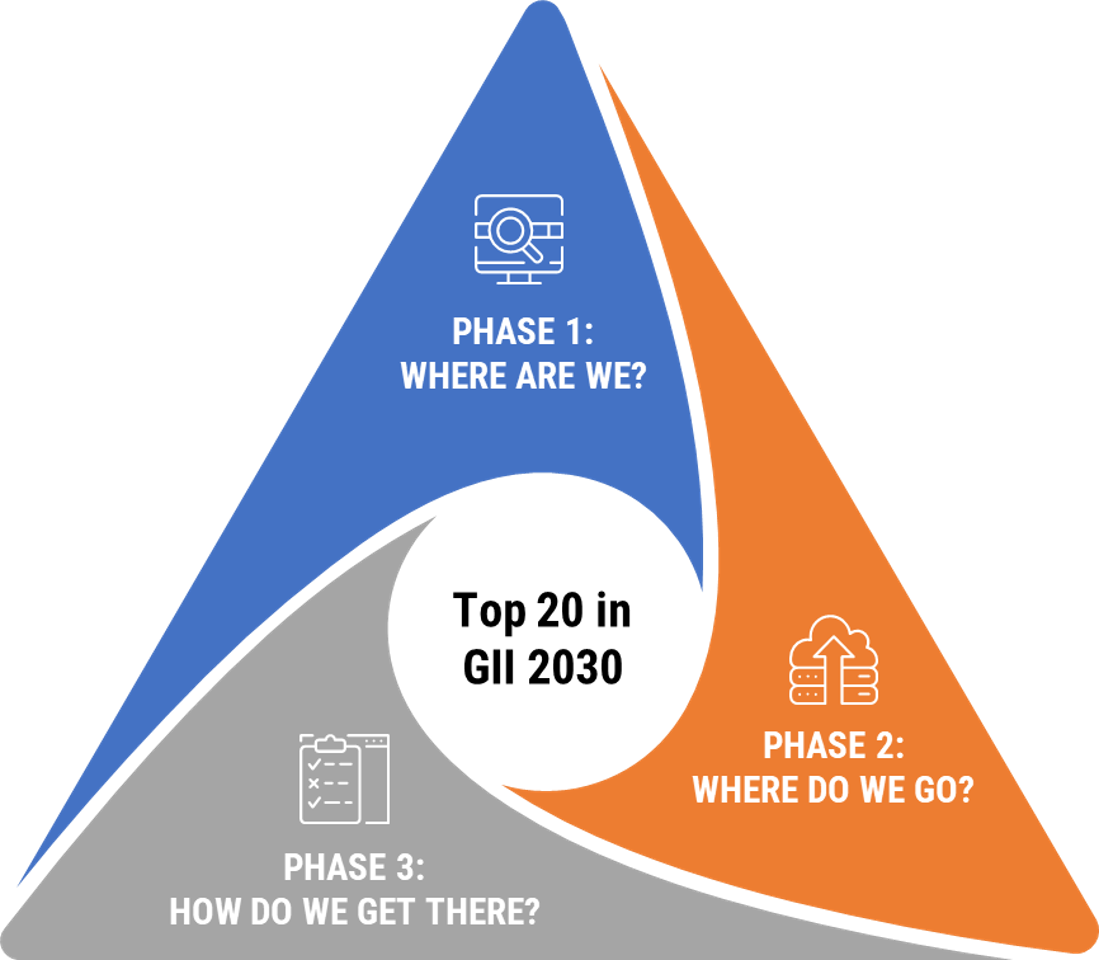
PHASE 2: ASPIRING FOR MALAYSIA'S STATE OF INNOVATION (√ DONE)
Objective:
- Benchmarking against global best practices of the GII and
- Setting the targets for Malaysia's aspiration in GII.
(Currently we are at this stage!)
PHASE 3a: MONITORING MALAYSIA'S STATE OF INNOVATION
Objective:
- Ensuring the strategies and initiatives are on track and recommending and
- Updating annual data of the GII indicators.
PHASE 3b: IMPROVING MALAYSIA'S STATE OF INNOVATION
Objective: Identifying short, mid and long-term strategies and implementing initiatives towards improving Malaysia's GII scores and ranking.
JIPGII Members
Pillar Lead: MRANTI
Ministries
- NRECC
- KKD
- MOT
- MOF
Agencies
- MCMC
- DOSM
- MAMPU
- MDEC
- JSM
- ST
Pillar Lead: MTDC
Ministries
- -
Agencies
- BNM
- BURSA MALAYSIA
- SECCOM
Pillar Lead: Cradle
Ministries
- MOHR
- MOHE
- MOF
- MITI
- MOSTI
- MASTIC
- Bhg. DANA
Agencies
- MIDA
- ASM
- MyIPO
- DOSM
- MPC
- BNM
- JPK
- MDEC
Pillar Lead: MyIPO
Ministries
- MOHE
- MITI
- MOF
- MOSTI
- Bhg. PTK
Agencies
- DOSM
- JSM
- MCMC
- PSM
- MRANTI
Pillar Lead: MIMOS
Ministries
- KKD
Agencies
- MATRADE
- MAMPU
- MyIPO
- MPC
- MYNIC
- DOSM
History
Sorry no records were found on the selected timeline.
Please change to another timeline...
GII FAQ
Frequently Asked Questions
The purpose of having a Frequently Asked Questions (FAQ) section here is to offer succinct and useful responses to commonly raised inquiries by users or customers regarding the Global Innovation Index (GII), the Inter-Agency GII Competitiveness Monitoring Committee (JIPGII), and MOSTI's initiatives in enhancing GII competitiveness performance.

Maaf, tiada keputusan dijumpai.
Cadangan Carian:
- Semak ejaan anda.
- Cuba lebih banyak perkataan umum.
- Cuba koasa kata yang berbeza yang membawa maksud perkara yang sama.
- Hantarkan pertanyaan anda dan pihak kami akan membantu anda mencarinya.
Maaf, tiada keputusan dijumpai.
Cadangan Carian:
- Semak ejaan anda.
- Cuba lebih banyak perkataan umum.
- Cuba koasa kata yang berbeza yang membawa maksud perkara yang sama.
- Hantarkan pertanyaan anda dan pihak kami akan membantu anda mencarinya.
Maaf, tiada keputusan dijumpai.
Cadangan Carian:
- Semak ejaan anda.
- Cuba lebih banyak perkataan umum.
- Cuba koasa kata yang berbeza yang membawa maksud perkara yang sama.
- Hantarkan pertanyaan anda dan pihak kami akan membantu anda mencarinya.
Maaf, tiada keputusan dijumpai.
Cadangan Carian:
- Semak ejaan anda.
- Cuba lebih banyak perkataan umum.
- Cuba koasa kata yang berbeza yang membawa maksud perkara yang sama.
- Hantarkan pertanyaan anda dan pihak kami akan membantu anda mencarinya.
Maaf, tiada keputusan dijumpai.
Cadangan Carian:
- Semak ejaan anda.
- Cuba lebih banyak perkataan umum.
- Cuba koasa kata yang berbeza yang membawa maksud perkara yang sama.
- Hantarkan pertanyaan anda dan pihak kami akan membantu anda mencarinya.
Maaf, tiada keputusan dijumpai.
Cadangan Carian:
- Semak ejaan anda.
- Cuba lebih banyak perkataan umum.
- Cuba koasa kata yang berbeza yang membawa maksud perkara yang sama.
- Hantarkan pertanyaan anda dan pihak kami akan membantu anda mencarinya.
Maaf, tiada keputusan dijumpai.
Cadangan Carian:
- Semak ejaan anda.
- Cuba lebih banyak perkataan umum.
- Cuba koasa kata yang berbeza yang membawa maksud perkara yang sama.
- Hantarkan pertanyaan anda dan pihak kami akan membantu anda mencarinya.
Maaf, tiada keputusan dijumpai.
Cadangan Carian:
- Semak ejaan anda.
- Cuba lebih banyak perkataan umum.
- Cuba koasa kata yang berbeza yang membawa maksud perkara yang sama.
- Hantarkan pertanyaan anda dan pihak kami akan membantu anda mencarinya.
Maaf, tiada keputusan dijumpai.
Cadangan Carian:
- Semak ejaan anda.
- Cuba lebih banyak perkataan umum.
- Cuba koasa kata yang berbeza yang membawa maksud perkara yang sama.
- Hantarkan pertanyaan anda dan pihak kami akan membantu anda mencarinya.
Maaf, tiada keputusan dijumpai.
Cadangan Carian:
- Semak ejaan anda.
- Cuba lebih banyak perkataan umum.
- Cuba koasa kata yang berbeza yang membawa maksud perkara yang sama.
- Hantarkan pertanyaan anda dan pihak kami akan membantu anda mencarinya.
Maklumat/data boleh disalurkan kepada pegawai MOSTI yang berikut:
1.Nama : Puan Noor Fairuz Binti Shamsudin
E-mel/No. Tel. : noorfairuz@mosti.gov.my / 03-8885 8110
2.Nama : Encik Rudy Bin Nurdin
E-mel/No. Tel. : rudy@mosti.gov.my / 03-8885 8652

GII Reports Compilation
Reports on the Global Innovation Index (2007 - 2022)
Welcome to the Collection of Global Innovation Index Reports!
Dear readers and innovators, It is with great pleasure and enthusiasm that we open the doors to the prestigious collection of Global Innovation Index Reports. The Global Innovation Index (GII) is an annual report that has been published since 2007 and provides a comprehensive framework and a set of indicators to measure innovation performance of countries and economies around the world according to their innovation capabilities and outcomes, identifies their strengths and weaknesses, provides policy recommendations and best practices to foster innovation.
The GII report covers a wide range of topics related to innovation, including:
- Innovation Rankings:
The GII ranks countries based on their overall innovation performance. It provides a comparative analysis of how nations are faring in terms of fostering innovation.
- Innovation Inputs:
The report assesses the inputs and enablers that contribute to a country's innovation capabilities, such as investments in education, R&D, infrastructure, and information and communication technology (ICT).
- Innovation Outputs:
The GII evaluates the tangible and measurable results of innovation efforts, such as patents, publications, creative products, and high-tech exports.
- Innovation Policy Analysis:
The report analyzes innovation policies and strategies implemented by countries to support and encourage innovation within their respective economies.
- Innovation Impact:
The GII examines the impact of innovation on economic growth, productivity, and other developmental outcomes.
You can find more information about the GII reports from 2007 until 2022 below.
Together, let us unleash the potential of innovation and forge a world that knows no bounds
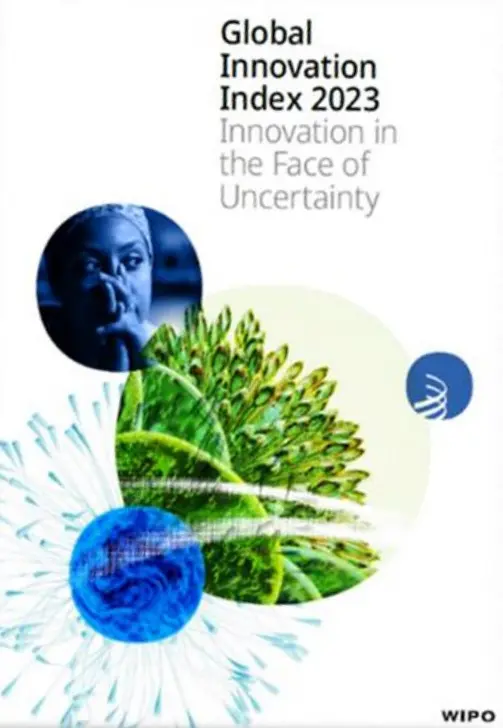
The Global Innovation Index 2023 (GII) takes the pulse of innovation against a background of an economic and geopolitical environment fraught with…
16thed.: 2023
New Ed. (Released on 27 Sept 2023)
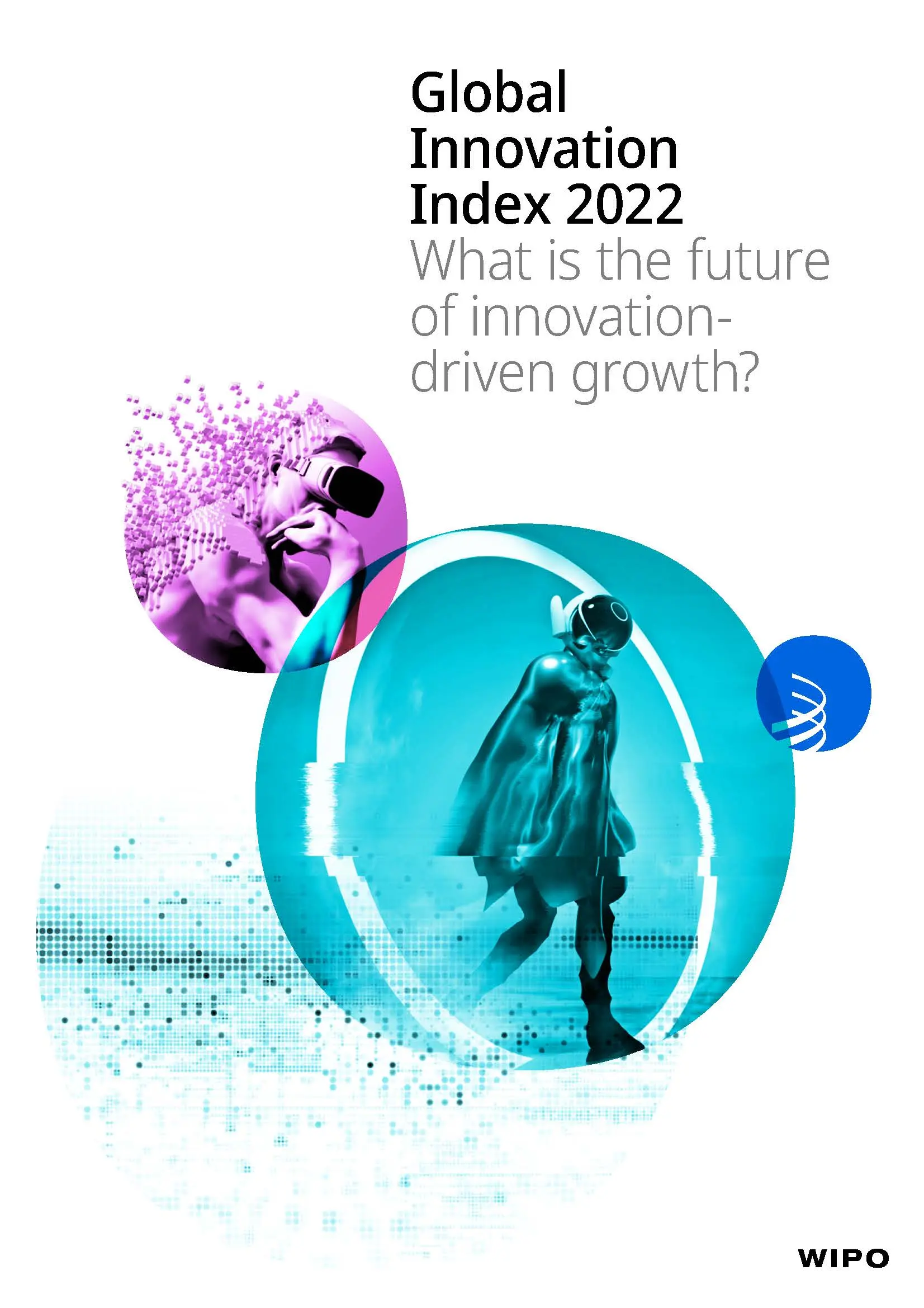
Global Innovation Index 2022 (GII) tracks global innovation trends against the background of an ongoing COVID-19 pandemic, slowing productivity…
15thed.: 2022
(Released on 27 Sept 2022)
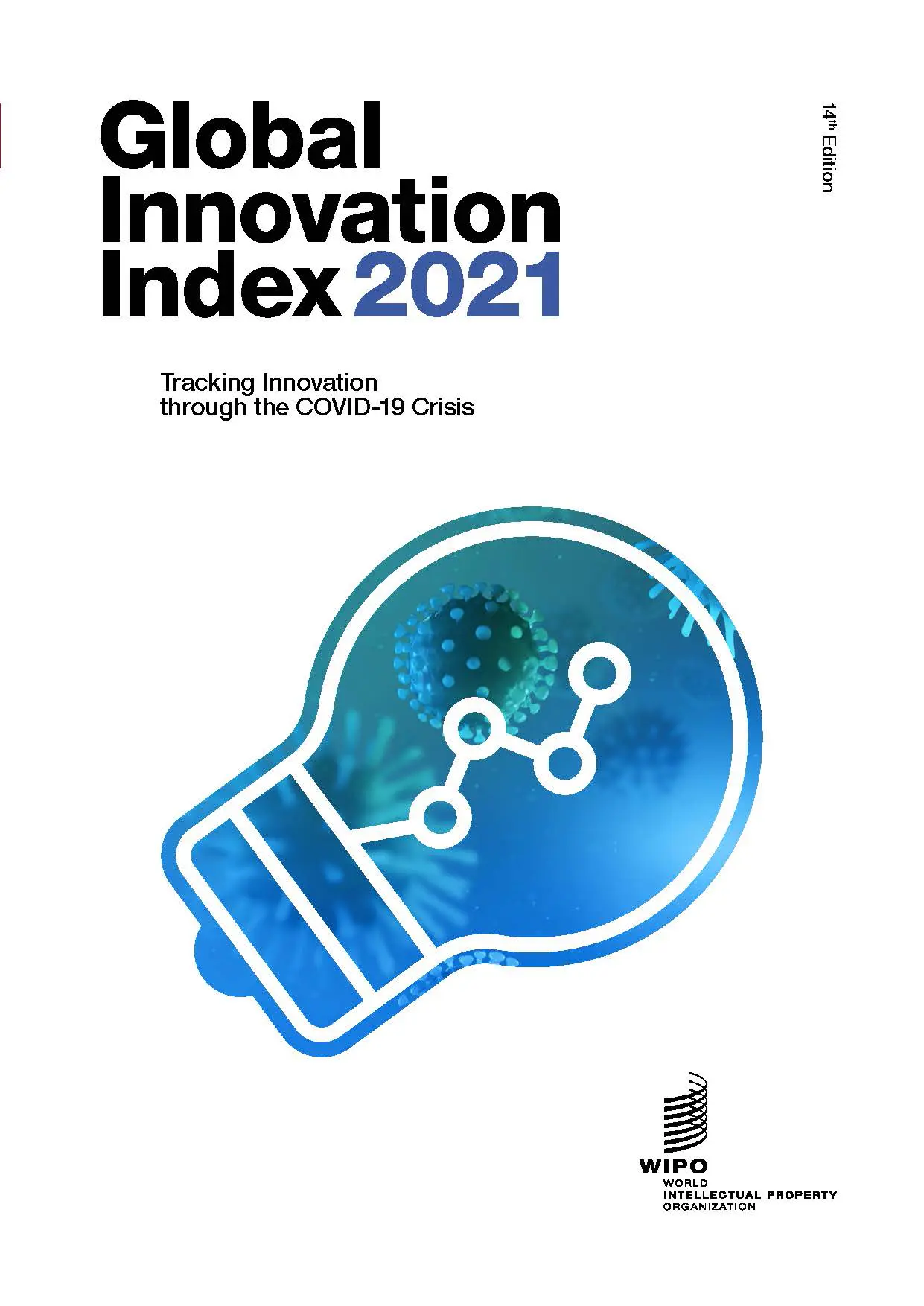
The Global Innovation Index 2021 takes the pulse of the most recent global innovation trends and ranks the innovation ecosystem performance of 132…
14th ed.: 2021
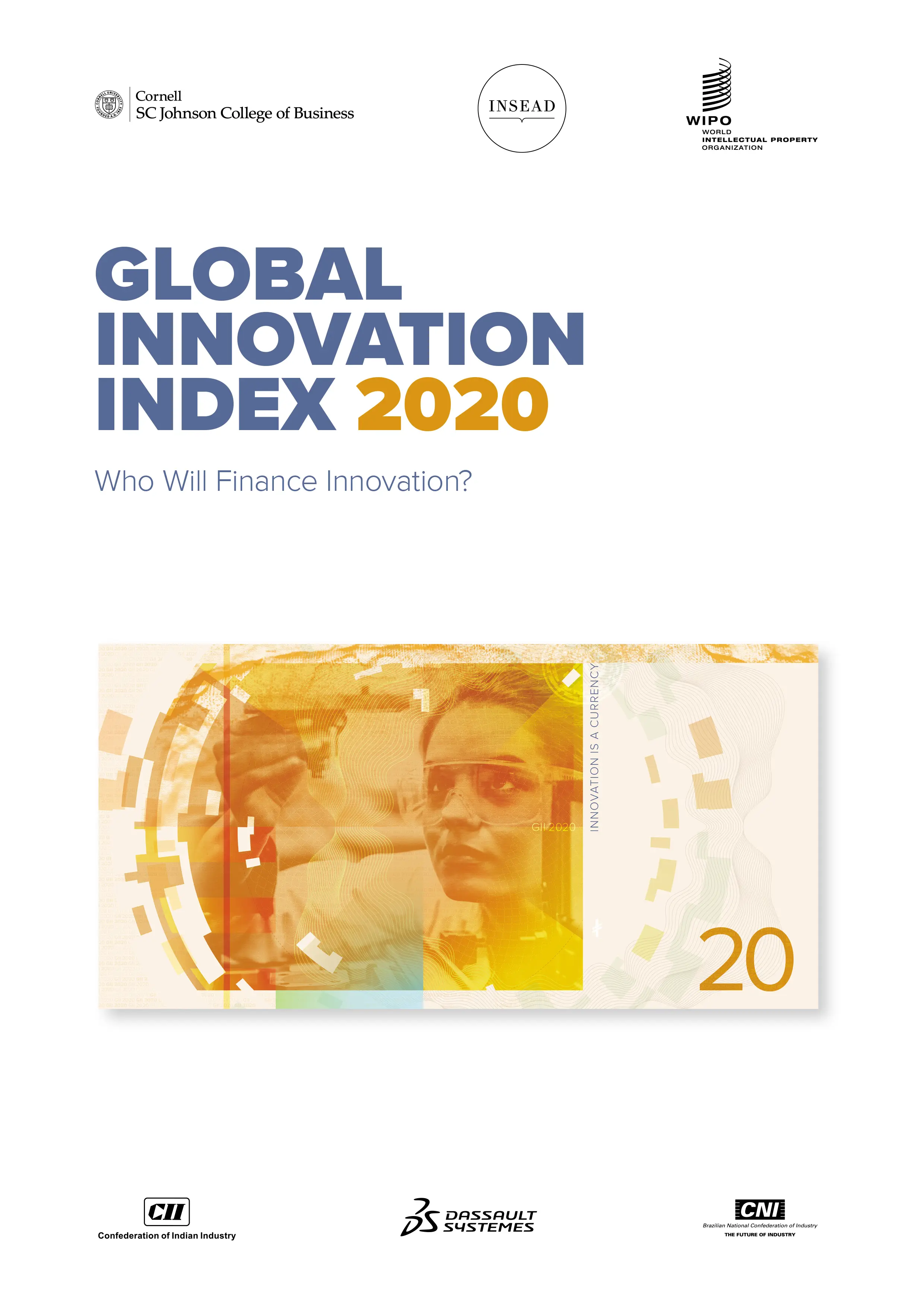
The Global Innovation Index 2020 provides detailed metrics about the innovation performance of 131 countries and economies around the world.
13th ed.: 2020
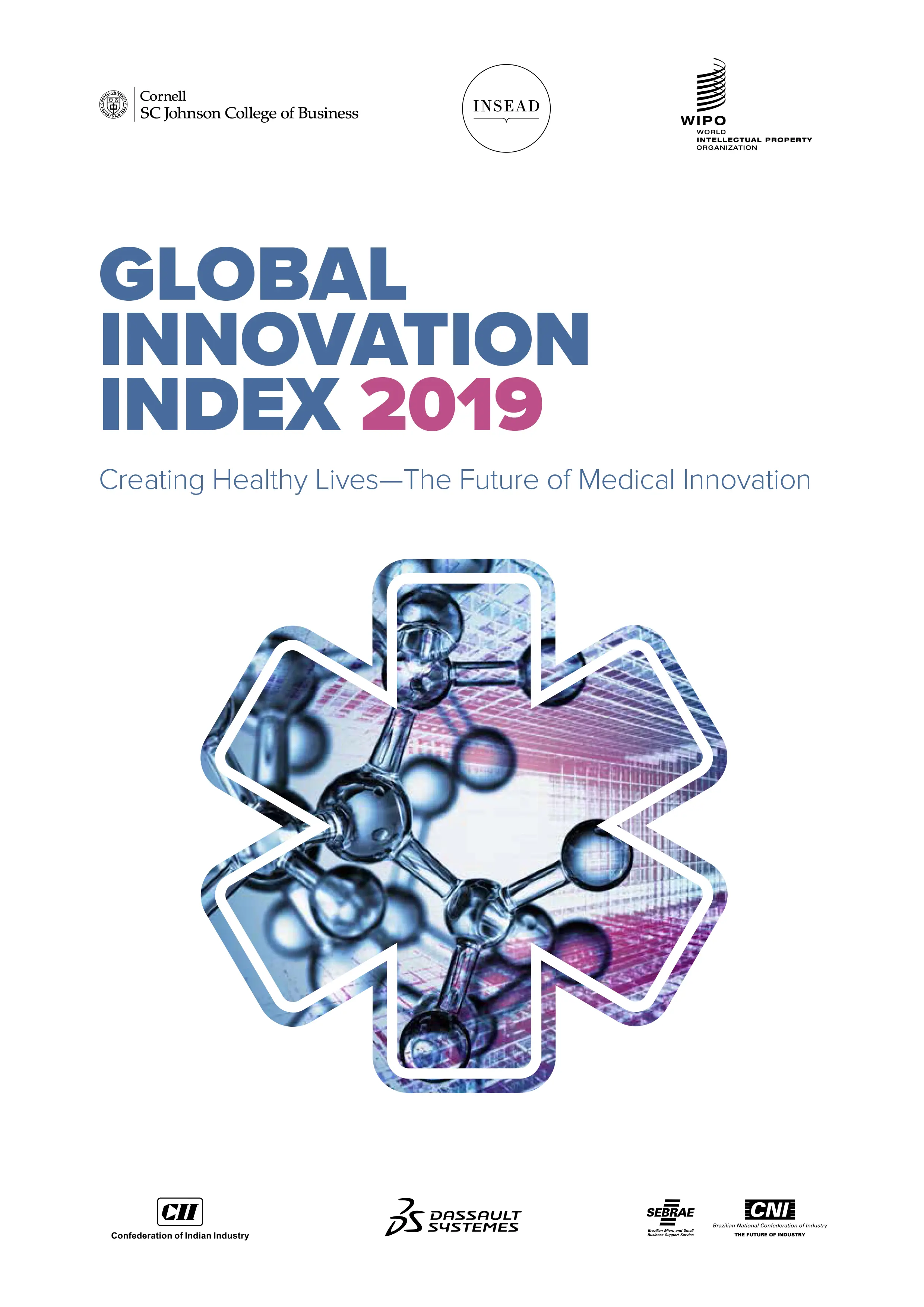
The Global Innovation Index 2019 provides detailed metrics about the innovation performance of 129 countries and economies around the world.
12th ed.: 2019
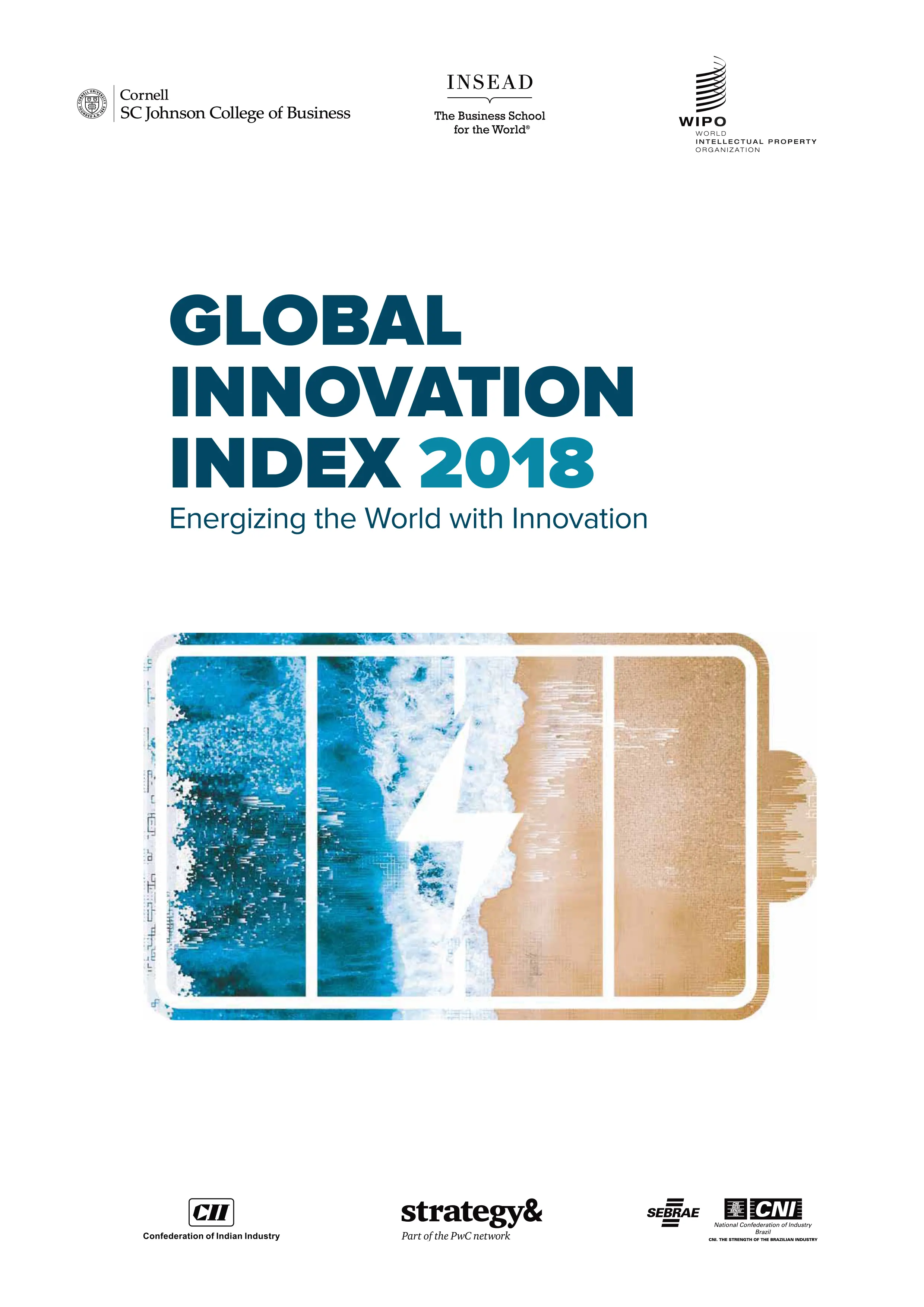
The Global Innovation Index 2018 provides detailed metrics about the innovation performance of 126 countries and economies around the world.
11th ed.: 2018
Contact Secretariat
GII Data Managment
Hi! Im MYGII

MASTIC

Administrator
Noor Fairuz Shamsudin
03-8885 8110
noorfairuz@mosti.gov.my

Administrator
Rudy Nurdin
03-8885 8652
rudy@mosti.gov.my
Help us with this survey
Please make your vote
Agency
Pillar Lead JIPGII
Pillar 1
Institution

Malaysia Productivity Corporation
Ilyana Norsaidah
Person In Charge
illyana@mpc.gov.my
03 - 7955 7266
Pillar 2
Human Capital & Research

Akademi Sains Malaysia
Teng Yu He
Person In Charge
teng@akademisains.gov.my
03 - 6203 0633
Pillar 3
Infrastructure

Malaysian Research Accelerator for Technology & Innovation
Nur Aliya Ayob
Person In Charge
aliya@mranti.my
03 - 8998 2020
Pillar 4
Market Sophistication
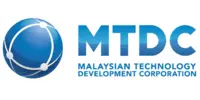
Malaysia Technology Development Corporation
Nor Halina Ghazali
Person In Charge
halina@mtdc.com.my
03 - 2172 6000
Pillar 5
Business Sophistication

Cradle Fund Sdn. Bhd.
Sitti Nursaadah Md Rusli
Person In Charge
sitti@cradle.com.my
03 - 4045 8600
Pillar 6
Knowledge & Technology Outputs

Intellectual Property Corporation of Malaysia
Meriam Nur Ahmad Hanbali
Person In Charge
meriam@myipo.gov.my
03 - 2299 8961
Pillar 7
Creative Outputs

Malaysian Institute of Microelectronic Systems
Siti Affida Zamry
Person In Charge
affida@mimos.my
03 - 8995 5000

